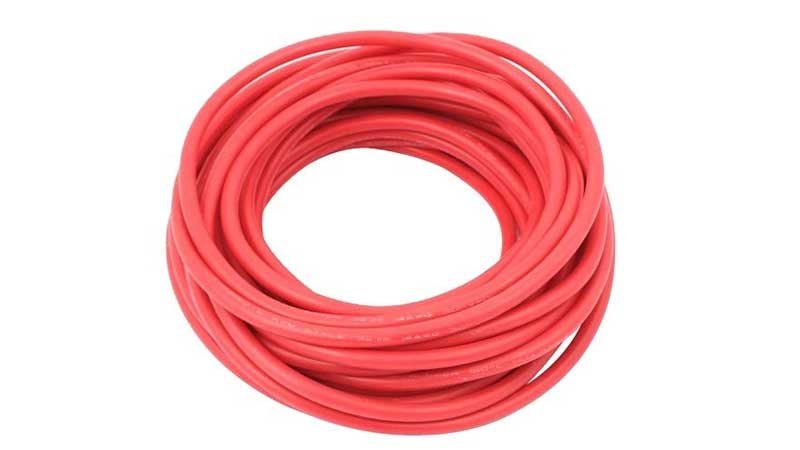Is Silicone Conductive? Can It Be Used in Electrically Active Environments?
In fact, pure silicone is an excellent insulator, but it can achieve controlled conductivity through modification.
To fully understand silicone’s electrical properties, we must consider its molecular structure, material characteristics, application environment, and modification methods. This article explores both the conductive and insulating properties of silicone.

What Is the Molecular Structure and Electrical Nature of Silicone?
The backbone of silicone consists of silicon–oxygen bonds (Si–O–Si), with organic groups such as methyl or phenyl attached to the side chains. This unique structure gives silicone both flexibility and excellent stability.
From an electrical point of view, the Si–O–Si structure contains almost no free electrons or ion pathways. Electrons cannot move through the molecular chain. This makes silicone a highly insulating and non-polar material.
Standard silicone typically has a volume resistivity of over 10¹⁴ Ω·cm, far higher than most rubbers and plastics. Its dielectric constant (2.8–3.3) remains stable with minimal frequency dependence, allowing consistent electrical performance even under extreme temperatures.
| Electrical Property | Typical Value for Standard Silicone |
| Volume Resistivity | >10¹⁴ Ω·cm |
| Dielectric Constant | 2.8–3.3 |
| Dielectric Strength | 20–25 kV/mm |
| Working Temperature Range | -60°C ~ 250°C |
Thanks to these excellent electrical characteristics, silicone has become an irreplaceable material in many insulation and electronic protection applications.

What Factors Affect the Insulating Properties of Silicone?
Silicone is naturally an excellent insulator, but its stability can vary depending on formulation and environmental conditions. The main influencing factors include the following:
Curing System
- Platinum-cured silicone offers the best insulation because the crosslinking reaction is complete and produces no by-products.
- Peroxide-cured systems may leave behind ionic residues, which slightly reduce volume resistivity.
Filler Type and Purity
- High-purity silica fillers improve mechanical strength while maintaining insulation.
- If metallic impurities or low-grade oxides are introduced, they may create conductive paths inside the material.
Environmental Humidity and Surface Contamination
- Moisture or dust on the surface can form minor leakage paths.
- Regular cleaning and keeping the surface dry help preserve insulation stability.
Aging and High-Temperature Exposure
- Long-term exposure to ozone, ultraviolet light, or high heat may cause partial breakdown of Si–O bonds, reducing dielectric strength.

What Are the Applications of Silicone in Insulation?
Thanks to its excellent thermal stability, aging resistance, and insulating properties, silicone has become one of the most reliable materials for electronic, electrical, and industrial insulation. The table below summarizes common silicone applications in insulation and their key technical benefits:
| Application Area | Typical Product Form | Main Function and Advantages |
| Electronic Seals and Insulating Pads | Silicone gaskets, sealing rings | Prevent arcing and short circuits, block moisture ingress, combining sealing and insulation functions |
| High-Temperature Insulated Wires and Cable Sheaths | Silicone-coated wires, heat-resistant sheaths | Can operate continuously above 200°C, suitable for appliances, automotive, and industrial equipment |
| Electronic Encapsulants and Sealants | RTV, LSR liquid silicone | Provide moisture-proof, shock-resistant, and insulating protection for PCBs, commonly used in sensors and power modules |
| Medical and Aerospace Insulation Materials | Medical probes, electrode insulation layers | Non-absorptive, aging-resistant, and stable over time; compliant with medical and aerospace standards |
| Arc-Resistant and Leakage-Proof Components | High-voltage insulators, silicone tubing | High dielectric strength, effectively prevents breakdown and leakage, enhancing equipment safety |
Can Silicone Be Made Conductive?
Although pure silicone is an insulator, it can be transformed into a conductive material through special modifications. The key is adding conductive fillers. Once the filler particles form continuous conductive paths within the silicone matrix, the entire material can conduct electricity.
| Filler Type | Conductive Mechanism | Typical Applications |
| Carbon Black | Particle contact forms conductive chains | Remote controls, silicone buttons |
| Graphite / Graphene | High electron mobility | Flexible sensors, conductive films |
| Metal Powder (Silver, Nickel, Copper) | Contact between metal particles | EMI shielding, conductive gaskets |
| Carbon Nanotubes / Nanofibers | 3D conductive networks | Stretchable conductive silicone |
| Conductive Polymers (PEDOT, PANI) | Intrinsic conductivity | Wearable electronic devices |

Conclusion
Overall, pure silicone is an excellent insulator, widely used in electrical protection, electronic sealing, and high-temperature insulation cables. By adding different conductive fillers, it can be transformed into a controllable conductive material, meeting the needs of sensors, touch devices, EMI shielding, and other advanced applications.
If you are looking for a professional silicone product manufacturer, we have years of experience in silicone formulation development and mold manufacturing. Contact us today, and our experienced technical team will provide high-performance, reliable silicone solutions for your project.